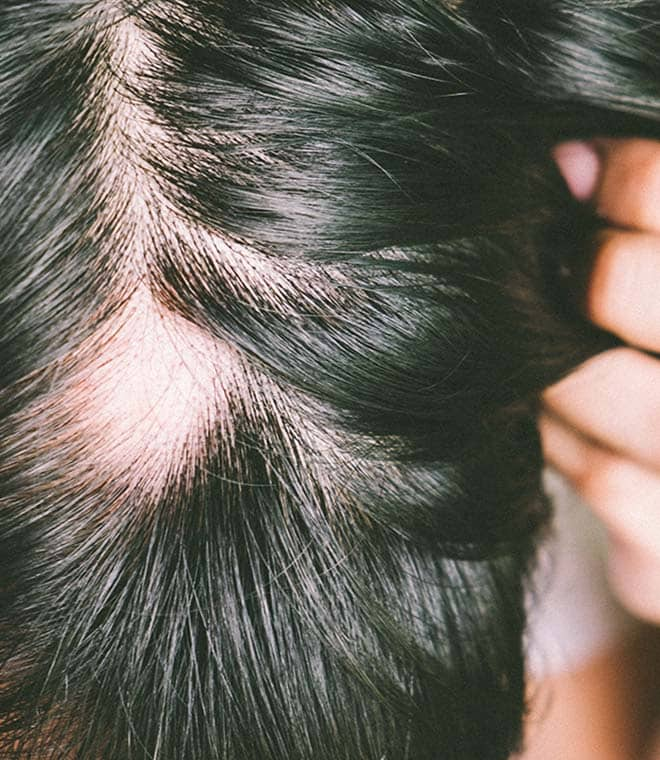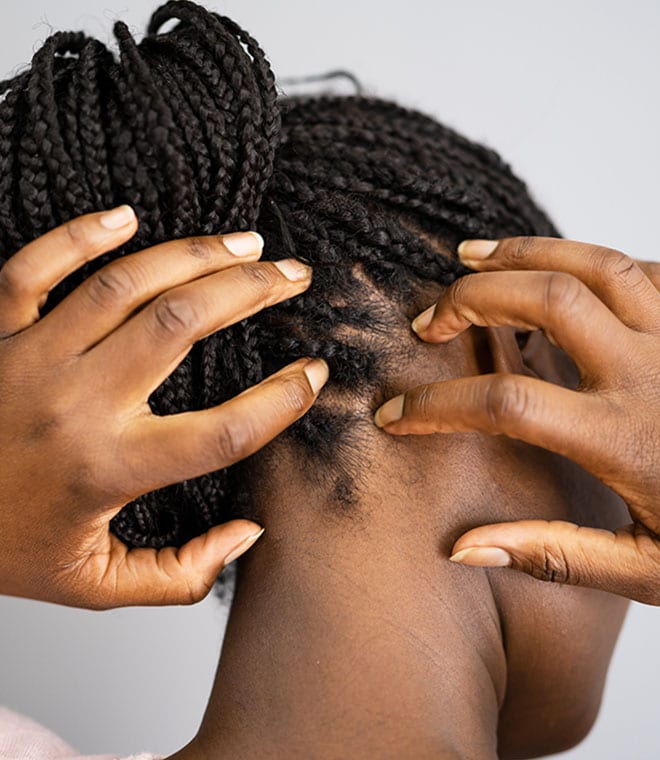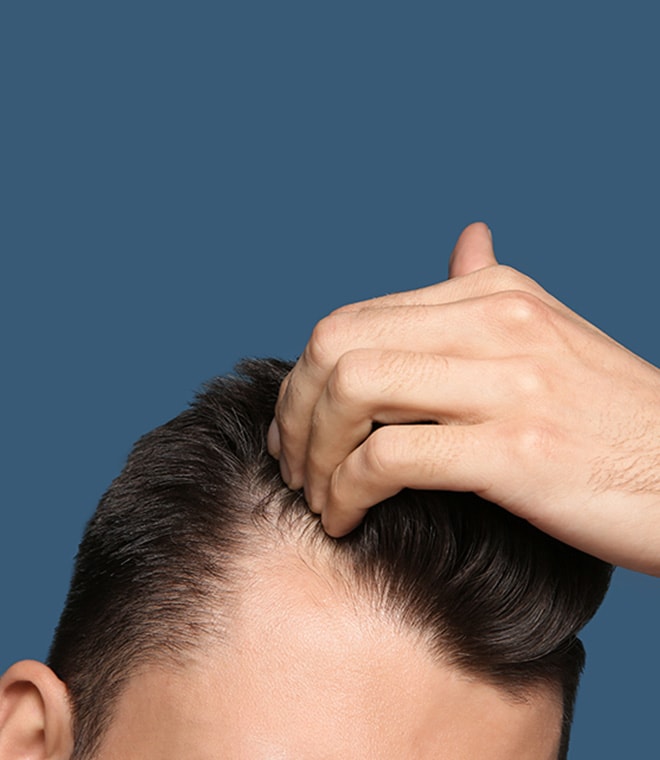Health
Is there a gene for hair loss?
By Anna H. Chacon, MD, FAAD Dec 06, 2022 • 4 min
Hair loss is a common problem that can be caused by a number of different issues. In some cases of hair loss, a genetic predisposition may be at least partially responsible.
What type of hair loss is genetic?
Androgenic alopecia is the type of hair loss thought to have a genetic component. Commonly called male or female pattern baldness, depending on the sex of the person who has the condition, androgenic alopecia occurs when a person has an increased sensitivity to sex hormones called androgens. Scientists believe that genes help determine who is hypersensitive to the hormones.
In people with androgenic alopecia, androgens cause hair follicles to shrink. This leads to gradual thinning. Eventually, the follicles stop growing hair completely and baldness occurs in the affected areas of the scalp. Because androgenic alopecia may be a genetic condition, you're more likely to develop the condition if a member of your family has or had male or female pattern baldness.
What are the symptoms of genetic hair loss?
Androgenic alopecia typically causes hair loss in a specific pattern. Male pattern baldness can progress in one of two ways:
- Hair loss beginning along the hairline and then spreading toward the back of the scalp
- Hair loss beginning at the crown and then spreading outward in a circular shape
Female pattern baldness normally begins along the center of the scalp and then spreads toward the sides of the scalp in both directions.
Is genetic hair loss treatable?
Typically, medical providers can recommend treatments for genetic hair loss. Treatments can potentially slow down the progression of androgenic alopecia, and in some cases, it may encourage hair to regrow in affected areas. Some treatments for androgenic alopecia include:
- Minoxidil is a topical medication available in different over-the-counter strengths for men and women. It is the most common treatment for androgenic alopecia. Most people need to apply the medication at least once or twice per day. It may take a few months to a year to produce results. If hair regrowth occurs, you normally need to continue using minoxidil to maintain the growth.
- Finasteride is a prescription pill typically taken once per day that’s only available for men. The medication may produce noticeable results within six months of use. Continuing to take the drug is necessary to maintain any regrowth that occurs.
- Spironolactone is an oral diuretic medication sometimes prescribed for the treatment of female pattern baldness. Normally, the drug takes six to 12 months to produce results, but it isn't effective for all women. When hair growth does reoccur, discontinuing use of the medication will usually result in hair loss starting again.
- Hair transplants involve a surgical procedure. Hair from a donor site on your scalp or from another part of the body is implanted on the scalp.
Each treatment for androgenic alopecia has risks as well as benefits, making it important that you carefully weigh your options with the help of your healthcare provider. Because not all treatments are effective for everyone, you may need to try more than one before you see results.
If you're concerned about hair loss, contact your healthcare provider. Genetic hair loss is just one potential cause of hair thinning and baldness. Only a healthcare provider can accurately diagnose what type of hair loss you're experiencing. Once you have a diagnosis, you can discuss the best treatment options with your healthcare provider.
Published December 2022.
Sources:
- https://www.ncbi.nlm.nih.gov/pmc/articles/PMC5308812
- https://nyulangone.org/conditions/hair-loss/types
- https://healthcare.utah.edu/healthfeed/postings/2018/02/hair-loss.php
- https://news.northwestern.edu/stories/2021/10/of-balding-mice-and-men-and-women/
- https://health.clevelandclinic.org/why-do-men-go-bald-and-is-there-anything-you-can-really-do-about-it/
- https://www.mayoclinic.org/diseases-conditions/hair-loss/symptoms-causes/syc-20372926
- https://www.mayoclinic.org/diseases-conditions/hair-loss/multimedia/male-pattern-baldness/img-20005838
- https://www.aad.org/public/ diseases/hair-loss/types/female-pattern
- https://www.aad.org/public/diseases/hair-loss/treatment/male-pattern-hair-loss-treatment
- https://www.aocd.org/page/AndrogeneticAlopecia




